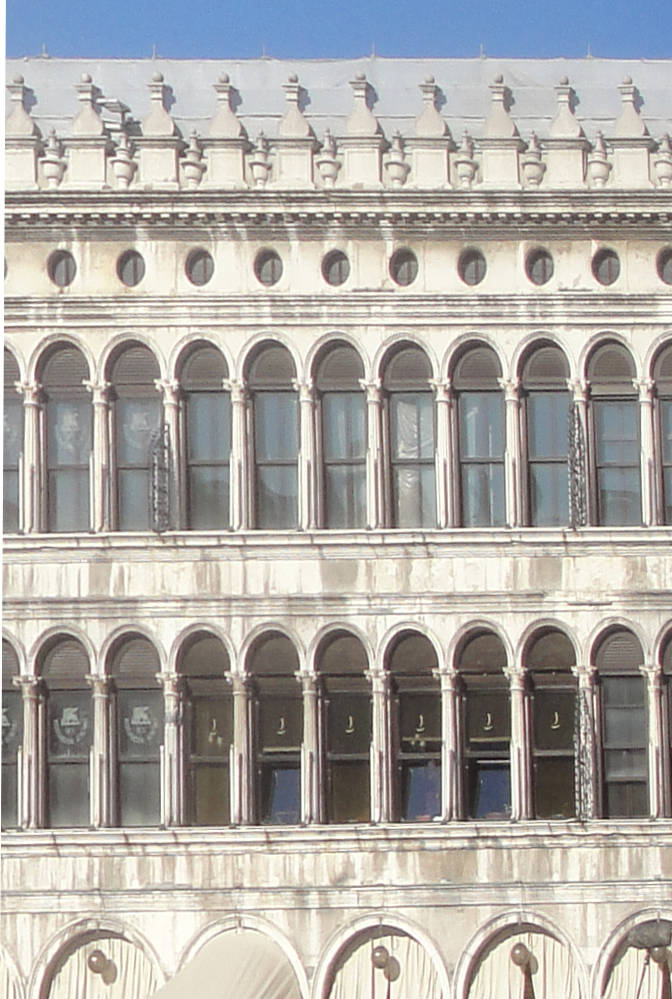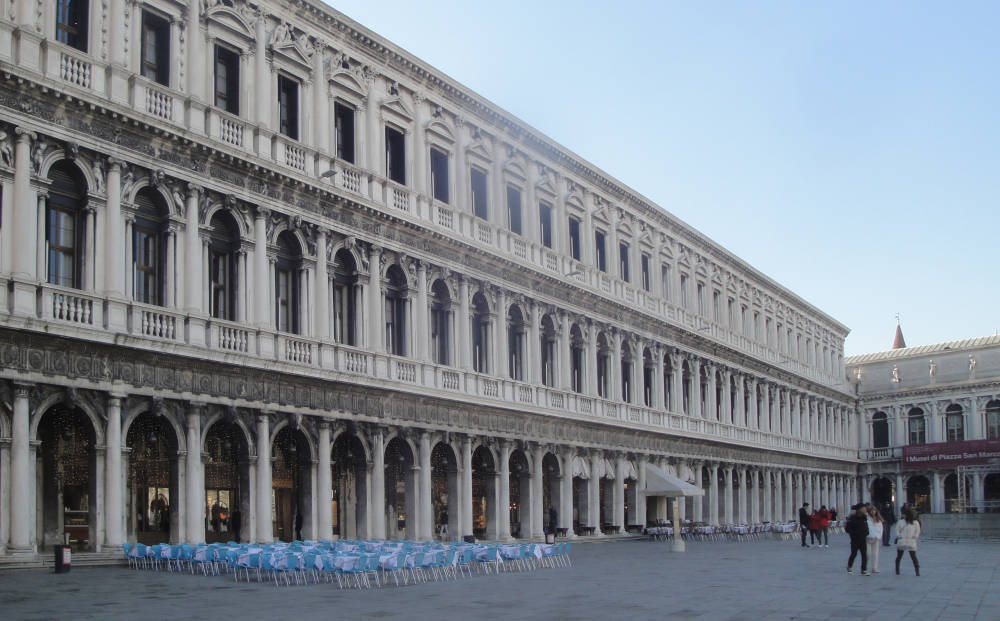[Click on images to enlarge them.]

The Procuratie Vecchie, whose ground floor is home to several of Venice’s world-famous cafés.
Richard Saul Wurman’s Access Guide explains out that Procuratie — “The name for these buildings means procurator’s offices and refers to their function during the Venetian Republic. The procurators were high government officials, and their headquarters next to the Doges’ Palace made Piazza San Marco the center of civic as well as religious life in Venice. With your back to the Basilica, the building you see on the right (Procuratie Vecchie) was reconstructed at the beginning of the 16th century to replace a Byzantine structure. Jacopo Sansovino, the official architect of the Republic, created the building’s final shape by adding the second floor in 1532. Notice that this facade is lighter and less imposing than its counterpart on the other side of the square (Procuratie Nuove), also designed by Sansovino and completed a hundred years later by Baldassare Longhena (architect of La Salute and the most important contributor to the Venetian-Baroque style). In the first building, Sansovino expanded on the existing first floor (attributed to Mauro Codussi) and continued it with thin columns and narrow arches, while on the second floor, built from scratch, he was able to express his personal ideals of Roman-inspired majesty” (108).


Left: The Façade of the Procuratie Vecchie at left is more delicate and lighter in appearance than that of the Procuratie Nuove seen at right.
In the tourist guide to the city’s architecture that appears near the end of the third volume of The Stones of Venice, Ruskin, writing when Italy had an Emperor, explains that “the continuation of the Procuratie Nuove, at the western extremity of St. Mark’s Place (together with various apartments in the great line of the Procuratie Nuove), forms the ‘Royal Palace,’ the residence of the Emperor when at Venice. This building is entirely modern, built in 1810, in imitation of the Procuratie Nuove, and on the site of Sansovino’s Church of San Geminiano” (11.90).
More of Ruskin's Venice
- St Mark’s Cathedral
- The Palazzo Ducale, Venice
- The Scuola de San Rocco
- Palazzi
- On the Grand Canal
- Leaving the Grand Canal
- On the way to Venice from the mainland
- Venice: Details and Corners
Photographs 2020. [You may use these images without prior permission for any scholarly or educational purpose as long as you (1) credit the photographer and (2) link your document to this URL in a web document or cite the Victorian Web in a print one.]
Bibliography
Ruskin, John. The Works. Ed. E. T. Cook and Alexander Wedderburn. “The Library Edition.” 39 vols. London: George Allen, 1903-1912.
Wurman, Richard Saul [and Patricia Schultz]. Florence Venice Milan Access. New York: HarperCollins, n.d.
� �
Last Modified 27 March 2020